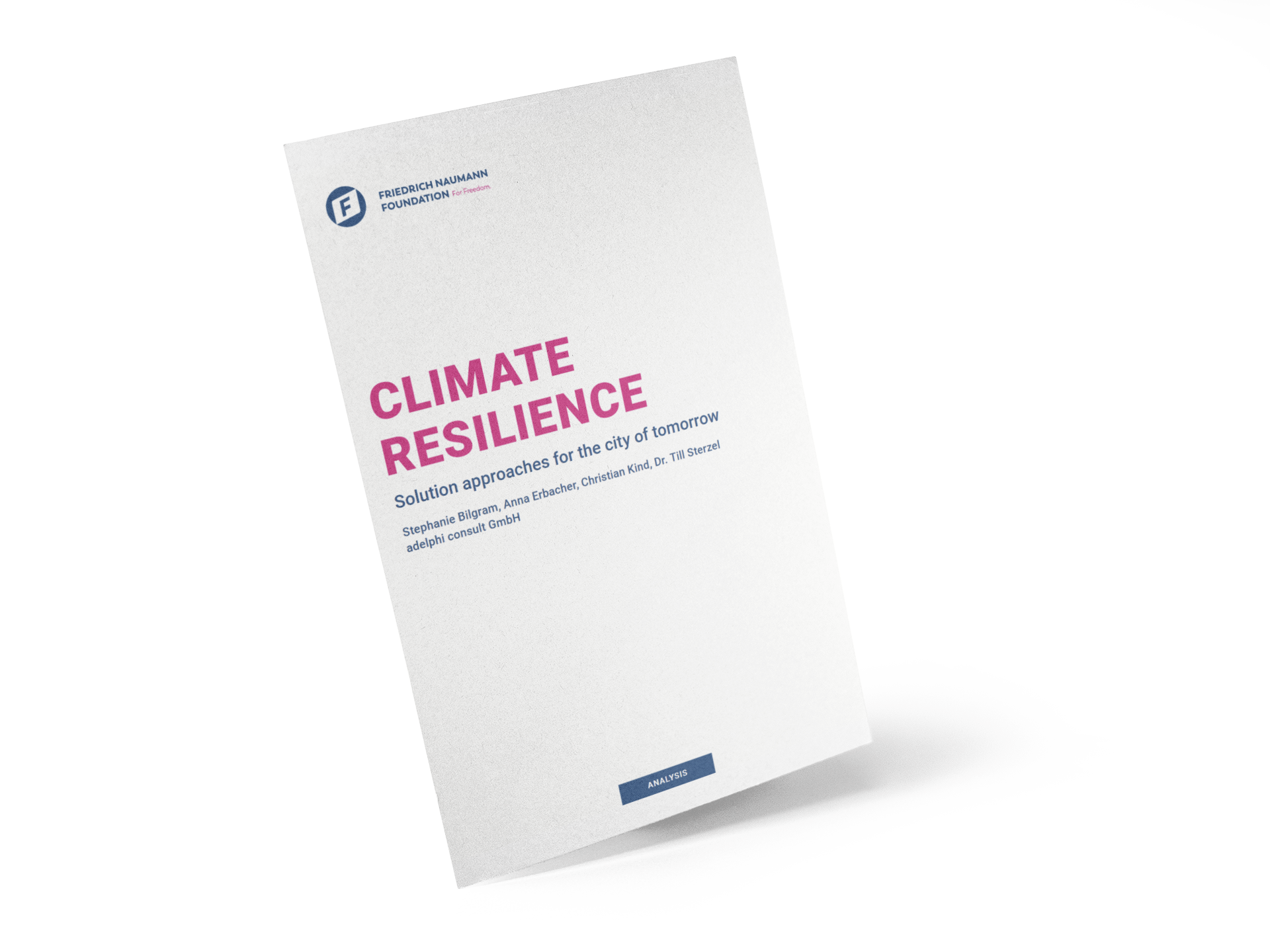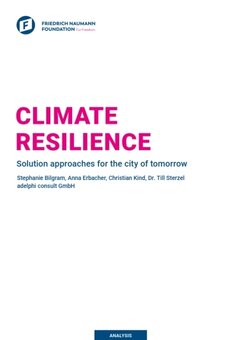Publication
How can cities adapt to climate change?

Heat, drought, heavy rainfall – the effects of climate change are noticable all around the world. While heatwaves and heavy rain have also occurred in previous decades, their duration and frequency have significantly increased. Cities are particularly affected by this development. Urban heat islands can form, causing temperature differences of up to 10 degrees Celsius between the city and the surrounding rural areas. The perceived temperature difference can be even higher.
There are numerous reasons for this effect: many materials used in cities, such as concrete, asphalt, or metal, heat up significantly. Traffic and industry further contribute to the heat, and the high proportion of paved surfaces reduces cooling through evaporation. This also reduces the capacity of the soil to absorb rainwater during heavy rainfall, which can in turn lead to flooding. This is a real problem for both the people and the economy. More and more people and valuable assets are concentrated in our cities. Thus the impact of weather extremes in urban areas can be devastating.
Of course, climate protection remains a top priority – the consequences of climate change cannot be controlled without a comprehensive reduction of greenhouse gas emissions. However, despite all efforts, we must also learn to live with the consequences of climate change.
In many municipalities, there are currently significant concerns about the financing of suitable adaptation strategies. These concerns are understandable because activities for urban climate adaptation do in fact cost money. It is all the more important that only those measures are carried out that have the greatest impact and the best cost-benefit ratio. A new study by the Friedrich Naumann Foundation for Freedom, conducted by the consulting firm adelphi, shows new possibilities, how cities can deal with the challenges of climate change.
The study focuses in particular on activities from the global South. Countries in tropical regions have already gained extensive experience in dealing with extreme events such as heatwaves and heavy rainfall, so there is much to learn from them. The authors of the study, for example, highlight the benefits of tiny forests in Amman, the effects of green corridors in Medellin, and the positive effects of innovative park design as seen in Bangkok.
At the same time, the study also makes it clear that all these measures come with significant opportunity costs. Especially in growing cities, there is high competition for the use of scarce land. When housing is scarce and expensive, it is not easy to leave cold air corridors undeveloped. Likewise, increasing automobile, public transport, and bicycle traffic compete with the need of unsealing, which is important for dealing with heavy rainfall and drought. Therefore, it will be crucial to focus on innovative approaches, such as multifunctional land use, so that economic, ecological, and social goals can be equally considered.
One thing is clear: we must not reduce our efforts in climate protection. At the same time, we must increasingly focus on climate adaptation measures in the future, especially in cities. It is important, especially in urban areas, that we focus on the most efficient measures.


